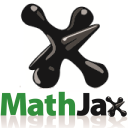SACNAS is an amazing organization and its annual National Conference changed my life. Until Herbert Medina and Ivelisse Rubio introduced me to SACNAS, I had no idea that one could simultaneously pursue an academic career in mathematics while working towards civil rights centrally in one’s career.
The name itself, SACNAS, is an anachronism. Just as AT&T is no longer the American Telephone and Telegraph Corporation, SACNAS is no longer just an acronym for the Society for Advancement of Chicano and Native Americans in Science, as the majority of SACNISTA’s don’t necessarily self identify as Chicano or Native American. SACNAS now is the largest organization working to broaden participation in STEM, working against gender inequity and underrepresentation in all fields of science.
The SACNAS national conference is regularly the largest gathering of minority scientists in the US, with thousands of attendees, yet it somehow fosters community, and feels like family. Mentorship is key at SACNAS, and is an integral part of the national conference. SACNAS does mentorship more successfully than any other professional organization of which I am aware. It’s lateral, and peer to peer, and infuses all aspects of the organization. There are a tremendous number of opportunities at the national conference, and to best take advantage of them, it helps to plan in advance. Here is a preview to mathematics at SACNAS 2014.
The activities fall roughly into the categories Scientific Symposia (S), Professional Development (P), Leadership Development (L), Keynote Talks (K), and Mentoring/Networking (M).
Wednesday, October 15.
- TheModern Math Workshop is a preconference event specifically for mathematics. All eight of the NSF funded mathematics institutes will give a preview of their upcoming programs. There are tons of activities, including a mini-course for undergraduates. This year, SAMSI is the lead organizer. More details about MMW are here.
Thursday, October 16.
- (S) Advancing the Next Generation in STEM: Rethinking K-12 Mathematics Teacher Education in the Era of High Stakes Education
- (S) Combinatorial Algebraic Geometry
- (S) Algebra: Much More Than Arithmetic!
- (S) On the Discrete Side of Mathematics
- (M) Networking Lunch
- (M) Navigating the NSF
- (M) SACNAS Welcome Ceremony and Keynote Address
- (M) Graduate Student Oral Presentations
Friday, October 17.
- (P) Igniting the Sparkle: An Indigenous Science Education Curriculum Model
- (P) Applying to Graduate School and the Interview Process
- (S) Beauty and the Beast: Our Real Life Relationship with Mathematics
- (P) Funding Sources: Graduate Fellowships & Beyond
- (P) Summer Research: Find the Right Program to Start Your Career
- (M) Student Presentations Peer Mentoring
- (S) Abstract Algebra Research Topics for Undergraduates
- (S) Applications of Mathematics in Biology
- (S) Current Research Trends in Mathematics Education: Issues That Matter
- (S) New Discoveries in Public Health and Life Sciences through Statistics
- (S) The Promise of Big Data in Interdisciplinary Science
- (S) What Stands in Our Way?: Barriers to Diversity and Inclusion
- (M) Lunch and Keynote Address
- (M) Conversations With Scientists
- (M) Poster Session 1
- (M) Dinner and Keynote Address
- (M) Annual SACNAS Pow Wow
Saturday, October 18.
- (M) Poster Session 2
- (P) Expand Your Network: How to Identify Advisors, Mentors and Sponsors for a Successful Career.
- (M) Keynote and Lunch
- (P) Academic Faculty Jobs at Predominantly Undergraduate Institutions
- (P) Expanding Your Horizons through Summer Research Programs
- (S) Mathematical Applications in Physiology
- (S) Problems in Algebra and Diophantine Equations
- (S) Have You Seen Statistics…Lately? Wow!
- (S) Young Latinas in Math and Computer Science
- (S) Discipline-Based Educational Research: Let’s Do the Math!
- (L) The Building Blocks to Become a Successful Leader: Identifying Motivation and Strengths, Approaches to Effective Time Management, Increasing Productivity, and Application of Transferable Skills
- (M) Dinner and Keynote
- (M) Awards Ceremony
- (M) ¡Pachanga Dance!
To see the complete SACNAS 2014 program, start here. You can create a personalized schedule using this tool.
For students new to SACNAS, or new to conferences in general, here are quick tips for getting the most out of your experience.
- Introduce yourself to everyone, students and faculty alike.
- Write down names. I quickly forget people’s names. Keep track of who you meet and where (e.g. Dr. Fancypants from U of Awesome at the Conversations With Scientists.)
- Write down strange words. If you’re at a talk, and something isn’t familiar, write it down and look it up later.
- Attend sessions outside of your comfort zone. There’s no better way to learn something new.
- Attend the meals and social functions (Pow Wow, dancing). These are great ways to meet people. And these people may be your colleagues and friends for life!
- Write a summary of your experience. You can use it to learn from, and share it with others who are interested in your experience. (SACNAS always loves feedback, so they can see what their doing well and what needs improving.)
- Plan your schedule in advance!
Hope to see you there!

